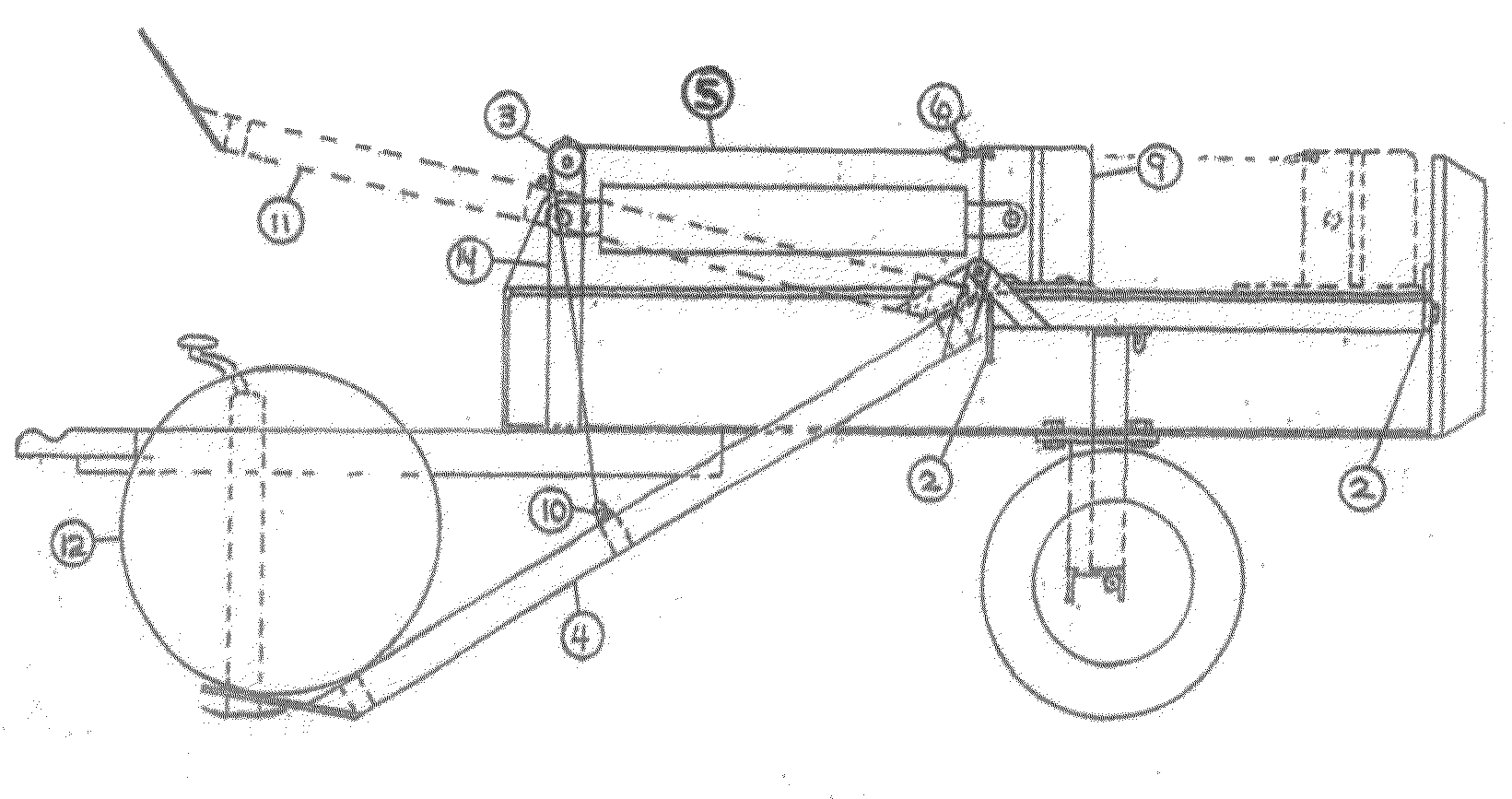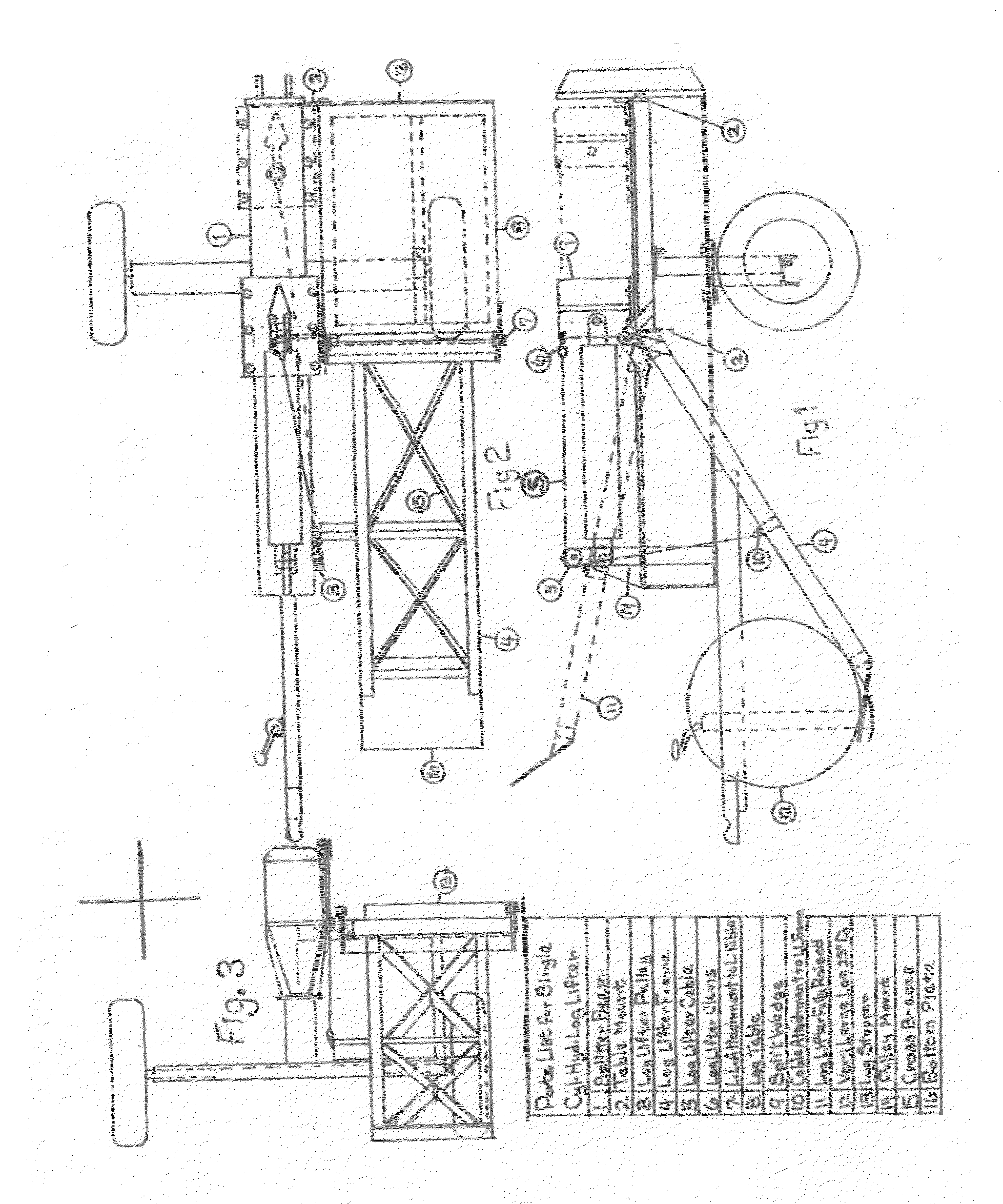Single cylinder hydraulic log lifter
a single-cylinder, hydraulic technology, applied in the direction of flat surface machines, load-engaging elements, profiling/shaping machines, etc., can solve the problems of curtailment of mobility, high cost of hydraulically powered log lifters, and high cos
- Summary
- Abstract
- Description
- Claims
- Application Information
AI Technical Summary
Benefits of technology
Problems solved by technology
Method used
Image
Examples
Embodiment Construction
[0013]Since this invention is an addition to a log splitter, it is assumed that the splitter is a 22 ton horizontal only splitter with a separate tank, not part of the axle. (Although the vertical / horizontal model would be modified in just the same way except that an extra trailer jack might have to be added to the table to prevent the splitter from tipping if the table would be overloaded.) The log table (No. 8) is added to the splitter first. A piece of 7⅝×2×¼ inch steel flat, with a ½ inch hole centered 1 inch in from the end, is welded to the backstop (No. 2) and underside of the top plate of the beam. Another piece ¼×5×7⅝ inch (No. 2 at the hinge end) and notched to avoid the underside of the split wedge and with a ½ inch hole in the appropriate place to attach to the table, is welded to the underside of the beam and to the web, far enough back toward the base end of the cylinder to allow the table and its mounting brackets to fit in between the two beam mounted brackets.
[0014]...
PUM
 Login to View More
Login to View More Abstract
Description
Claims
Application Information
 Login to View More
Login to View More - R&D
- Intellectual Property
- Life Sciences
- Materials
- Tech Scout
- Unparalleled Data Quality
- Higher Quality Content
- 60% Fewer Hallucinations
Browse by: Latest US Patents, China's latest patents, Technical Efficacy Thesaurus, Application Domain, Technology Topic, Popular Technical Reports.
© 2025 PatSnap. All rights reserved.Legal|Privacy policy|Modern Slavery Act Transparency Statement|Sitemap|About US| Contact US: help@patsnap.com


